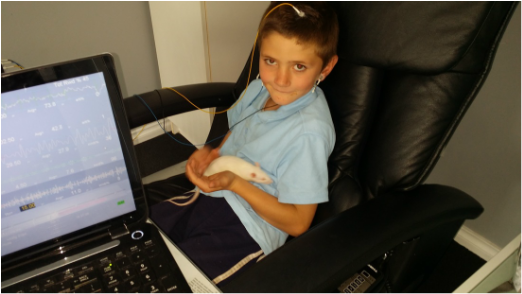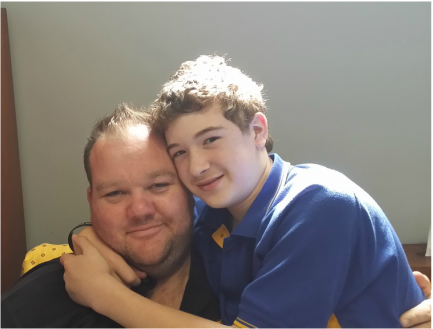Neurofeedback
Grace Counselling Service is very excited to bring Neurofeedback to the Western NSW region. Neurofeedback is a rapidly developing discipline at the cutting edge of mental health care.
What is Neurofeedback?
Neurofeedback is a gentle, non-invasive treatment therapy, and is used to treat a number of conditions including:
- Anxiety
- Attention deficits (ADHD/ADD)
- Autistic Spectrum
- Behavioural disorders
- Bipolar Disorder
- Body Dis-morphia (Including Anorexia, Bulimia)
- Cerebral palsy
- Depression
- Eating disorders (anorexia, bulemia, body dysmorphia)
- Headaches and migraines
- Pain management
- Sleep disorders
- Tic Disorders (Tourettes)
Neurofeedback is direct training of brain function, by which the brain learns to function more efficiently. It helps to understand the relationship between the brain and human behaviour at ever-deeper levels of emotion.
How Does Neurofeedback Work?
Neurofeedback training is a painless, non-invasive procedure. Sensors are placed on the scalp, and on each ear (like clip-on earrings). The brain waves are monitored by an amplifier and a computer-based instrument that processes the signal and provides the proper feedback. This is displayed to the client by means of a video game or display, along with audio signals/frequencies. It is displayed to the practiioner via EEG on our computer.
The client is effectively playing the video game, and is asked to manipulate the video game with his or her brain (no remote control is given to the client).
Feedback is shown to the client, and the client is rewarded for changing their brain activity to more appropriate patterns. This is a gradual learning process which improves the emotional functioning of the client over time. On some occasions, observations of major emotional changes can be seen to occur after a first session. Milestones of further changes can be noticed at sessions 10, 30 and 40, depending on the individual.
Eventually the brainwave activity is "shaped" toward more desirable, more regulated performance. The new pattern is one which is closer to what is normally observed in individuals without such disturbances.
The client is effectively playing the video game, and is asked to manipulate the video game with his or her brain (no remote control is given to the client).
Feedback is shown to the client, and the client is rewarded for changing their brain activity to more appropriate patterns. This is a gradual learning process which improves the emotional functioning of the client over time. On some occasions, observations of major emotional changes can be seen to occur after a first session. Milestones of further changes can be noticed at sessions 10, 30 and 40, depending on the individual.
Eventually the brainwave activity is "shaped" toward more desirable, more regulated performance. The new pattern is one which is closer to what is normally observed in individuals without such disturbances.
What is involved in having Neurofeedback treatment?
An initial assessment is done. This involves an interview to clarify the focus of treatment, and to understand the important factors of the client’s background. No EEG is taken during the initial assessment.
The first five Neurofeedback sessions may last up to 1 hour each, while we establish the relationship between the client, the treatment and the practitioner. Once established, subsequent sessions can be completed as quickly as 40 minutes. It is recommended that clients attend 2-3 times wk, or at least twice per week, initially. There is no harm in training more often. Your practitioner will determine when or if the frequency of your training can be reduced to once per week.
The good news is once your brain has forged a new neuro pathway through neurofeedback, the benefits of the training are permanent.
The first five Neurofeedback sessions may last up to 1 hour each, while we establish the relationship between the client, the treatment and the practitioner. Once established, subsequent sessions can be completed as quickly as 40 minutes. It is recommended that clients attend 2-3 times wk, or at least twice per week, initially. There is no harm in training more often. Your practitioner will determine when or if the frequency of your training can be reduced to once per week.
The good news is once your brain has forged a new neuro pathway through neurofeedback, the benefits of the training are permanent.
How many training sessions are needed?
Without an assessment this is a difficult question to answer. Some clients need as few as 30 sessions, while others will need as many as 50 training sessions. This therapy requires a commitment to change, but the results are worthwhile.
Do the Effects Last?
 Will with our play therapy pet, Snowball
Will with our play therapy pet, Snowball
Yes.
Once someone has improved and stabilised there is little tendency for the gains to be lost. Neurofeedback involves learning by the brain and if that brings order out of disorder, the brain will continue to use its new capabilities, and thus reinforce them.
In a published followup study 49 children who received neurofeedback training were retested every year for three years, and showed no decline in their ability to sustain focus.
However, when dealing with degenerative conditions like Parkinson’s or the dementias, training may need to be continued at some level over time. A child living in a toxic environment (in either the physical or the psychological sense) will have more difficulty retaining good function.
Once someone has improved and stabilised there is little tendency for the gains to be lost. Neurofeedback involves learning by the brain and if that brings order out of disorder, the brain will continue to use its new capabilities, and thus reinforce them.
In a published followup study 49 children who received neurofeedback training were retested every year for three years, and showed no decline in their ability to sustain focus.
However, when dealing with degenerative conditions like Parkinson’s or the dementias, training may need to be continued at some level over time. A child living in a toxic environment (in either the physical or the psychological sense) will have more difficulty retaining good function.
Is Neurofeedback harmful?
Absolutely not!
With Neurofeedback, nothing is put into the brain. We only measure the brain's activity, and show it to the trainee as a video game. There are over 250 published scientific studies of Neurofeedback, and none report harmful effects. Neurofeedback is very safe.
With Neurofeedback, nothing is put into the brain. We only measure the brain's activity, and show it to the trainee as a video game. There are over 250 published scientific studies of Neurofeedback, and none report harmful effects. Neurofeedback is very safe.
Will Neurofeedback change my or my child's personality?
Absolutely not! Personality is innate, and God given.
Neurofeedback helps people gain better self control and improves their mood and motivation, and stabilises emotional functioning.
Neurofeedback helps people gain better self control and improves their mood and motivation, and stabilises emotional functioning.

Written by Chris Matheson on February 2, 2015
As at April 15 - 2015 this client was training on Session 37 of the recommended 50
As at April 15 - 2015 this client was training on Session 37 of the recommended 50
#1 Why did you decide to do Neuro Feedback Training?
In a further effort to help our son with his Autism.
#2 How has it benefitted you?
So far we and our sons school have seen him better manage his anxiety and emotions.
#3 When did you start to notice change? (At what session number approx)
The changes were noticeable after approximately 2 to 3 sessions.
#4 What changes did you notice? At what session?
Our son became calmer and seemed to manage his anxiety better.
#5 Would you recommend NFB to others? Why?
Yes I would, Simply because the therapy has very little risk and has the opportunity to be very beneficial.
In a further effort to help our son with his Autism.
#2 How has it benefitted you?
So far we and our sons school have seen him better manage his anxiety and emotions.
#3 When did you start to notice change? (At what session number approx)
The changes were noticeable after approximately 2 to 3 sessions.
#4 What changes did you notice? At what session?
Our son became calmer and seemed to manage his anxiety better.
#5 Would you recommend NFB to others? Why?
Yes I would, Simply because the therapy has very little risk and has the opportunity to be very beneficial.
|
|
#1 Why did you decide to do NeuroFeedback Training?
Desperate need to help my husband - depression for 2 years. Husband had planned 3 types of suicide.
#2 How has it benefited you?
With 2 sessions a week for around 6 months, my husband benefitted from the contact with Lorraine and the feedback.
#3 When did you start to notice change? (At what session number approx)
Session 1 was like he was back to normal, that did not last long though. He had several periods of seeming depressed but I could see glimmers of hope often.
#4 What changes did you notice? At what session?
He was more assertive in situations he never has been. At least last half of the sessions.
#5 Would you recommend NFB to others? Why?
I would recommend it along with some counselling. I noticed that my husband did not have the skills to manage disappointment when his assertiveness did not get his desired outcome.
Client Anonymous - March 14th 2016.
Desperate need to help my husband - depression for 2 years. Husband had planned 3 types of suicide.
#2 How has it benefited you?
With 2 sessions a week for around 6 months, my husband benefitted from the contact with Lorraine and the feedback.
#3 When did you start to notice change? (At what session number approx)
Session 1 was like he was back to normal, that did not last long though. He had several periods of seeming depressed but I could see glimmers of hope often.
#4 What changes did you notice? At what session?
He was more assertive in situations he never has been. At least last half of the sessions.
#5 Would you recommend NFB to others? Why?
I would recommend it along with some counselling. I noticed that my husband did not have the skills to manage disappointment when his assertiveness did not get his desired outcome.
Client Anonymous - March 14th 2016.

